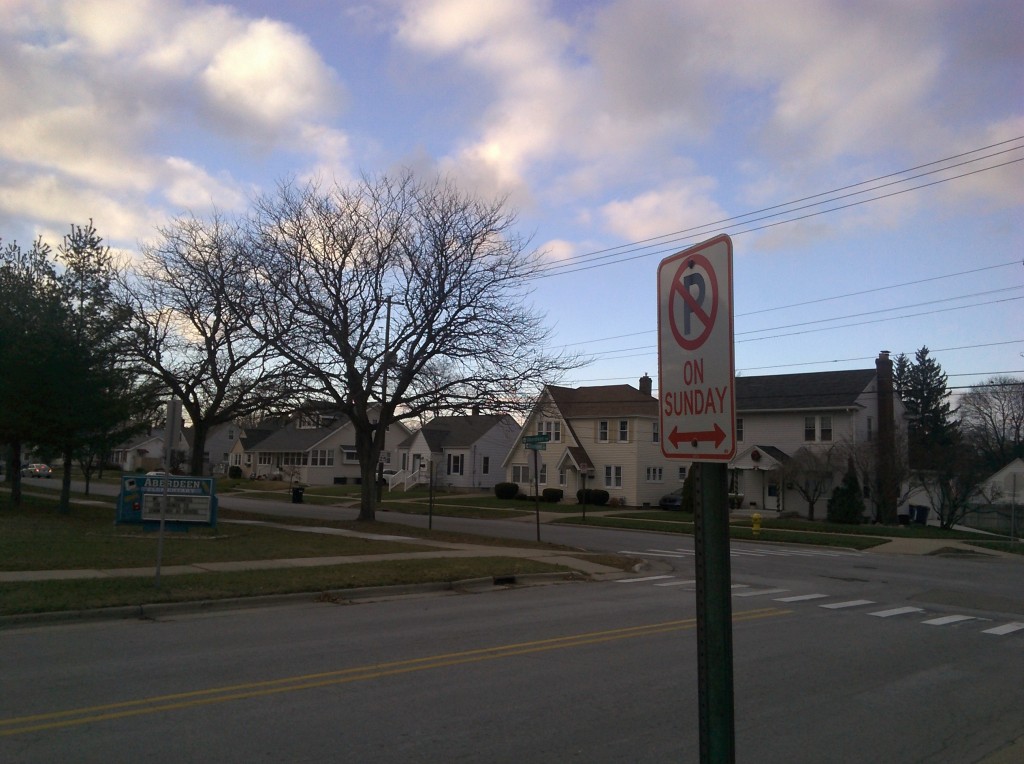
It is hardly a fresh insight to say that viewers interpret the light relative to the surrounding conditions. A single candle seems very bright in an utterly dark room, but the same candle in broad daylight is hardly noticed. The same is true of seasoning in food (putting sweet and sour together allows each to enhance the other), plot development in movies (good or bad conditions of the protagonist are rated each relative to the other), shadow in juxtaposition to light, red color in relation to green, or symphonic quiet passages relative to crescendo sequences.
The afternoon light recorded in this photo prompted me to wonder at the intense luminosity of pre-winter blue in the northern hemisphere at 43 degrees north latitude: why should this same patch of sky change as the position of the sun moves lower to the horizon in the run-up to the winter solstice? Probably the physics of light, the nature of the Earth atmosphere and seasonal axis tilt, and the way human brains interpret light by relative contrast to adjacent subjects all together contribute to this sense of bright skies in the late afternoon view. But extending this mode of perceiving light to the wider arena of seeing the world of one’s mind, what does it suggest?
Given the way that a subject’s boundary definition, its perceived presence, color values, reflectivity, and overall look can be affected by the surrounding frame where it appears, it makes sense to think that the same effects do affect concepts, arguments, logical exposition and persuasive presentations, too; that is to say, the meaning of a topic is colored by what occurs just before encountering that subject matter. Your frame of mind had been adjusted to topic X and remained in that position at the moment of meeting topic Y. Furthermore, the standpoint adopted with topic Y will then carryover, at least momentarily, into the next topic that comes along. An alternative sequence of mental events would interrupt the carryover effect by introducing a distraction, much like the multi-course meal is broken up between sessions by means of a “palette cleanser” such as a morsel or two of mild-flavored melon. Professionals who depend on their nose and tasting senses (wine evaluators, coffee judges, whisky buyers, chocolate buyers, perfume merchants, et cetera) understand this need to refresh their critical senses between sessions. Probably movie reviewers, too, know it is valuable to take a break between screenings to avoid carryover/latency feelings that may color the new subject when it is seen in light of what came before it.
It seems like a big stretch of the imagination to go from the perception of the above skies in the photo being unnaturally bright to the world of brokers judging coffee, but by such jumps of the mind do metaphors allow people to branch into new and unexpected, sometimes reverberating poetic, ways. So far, this ability to leap sideways in surprising figures of speech is one thing humans continue to beat machines at; long may it remain this way!
